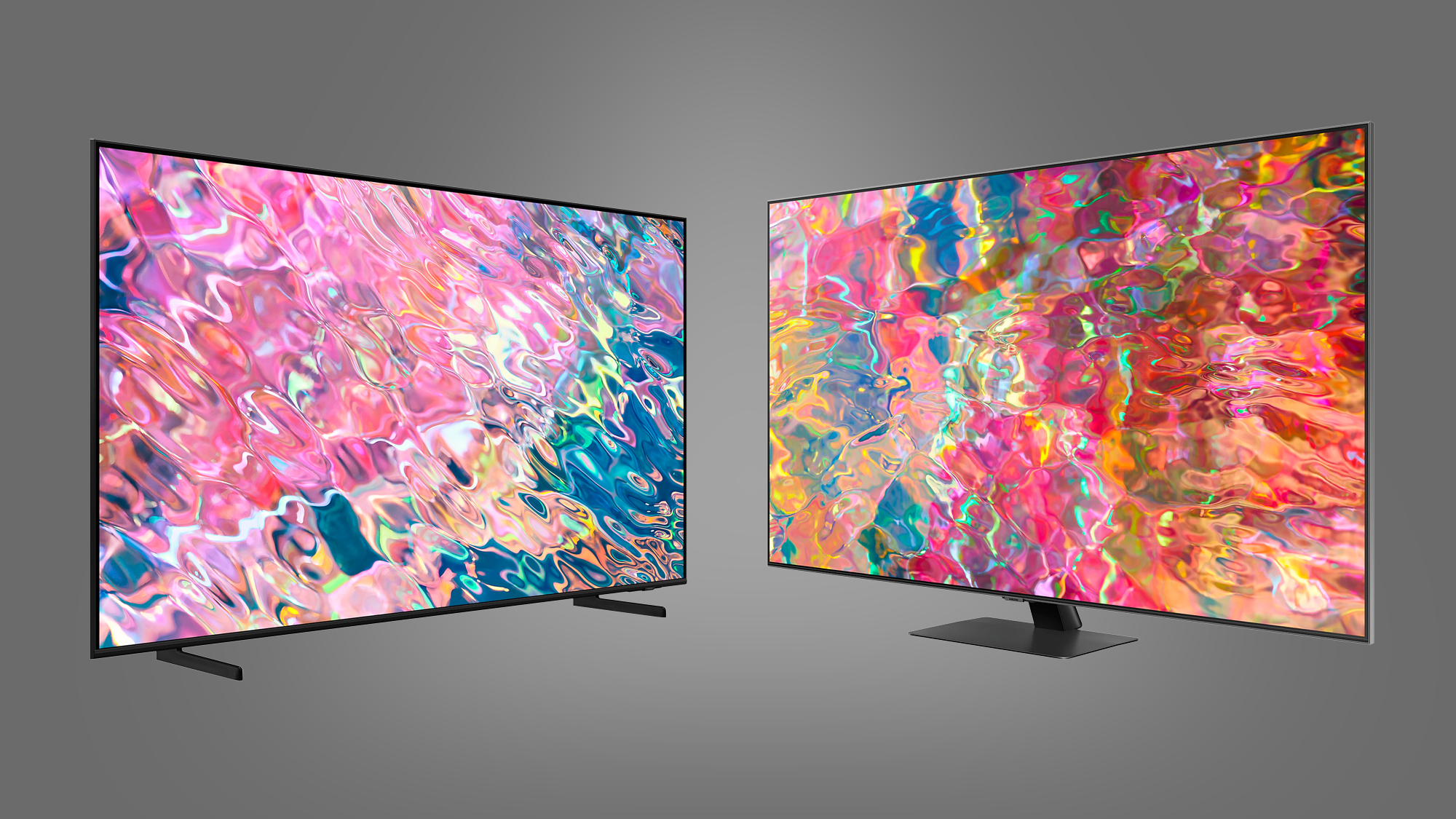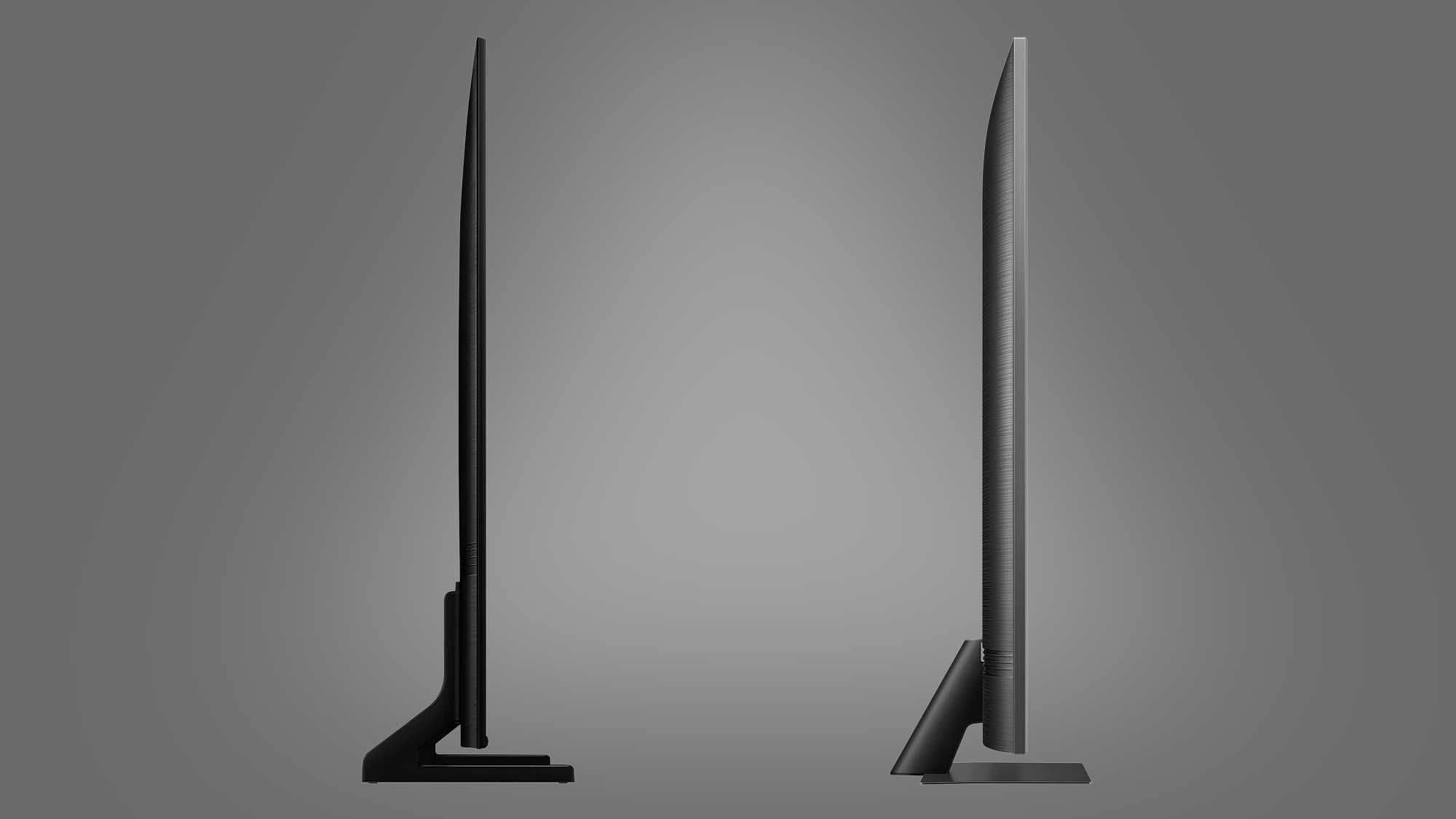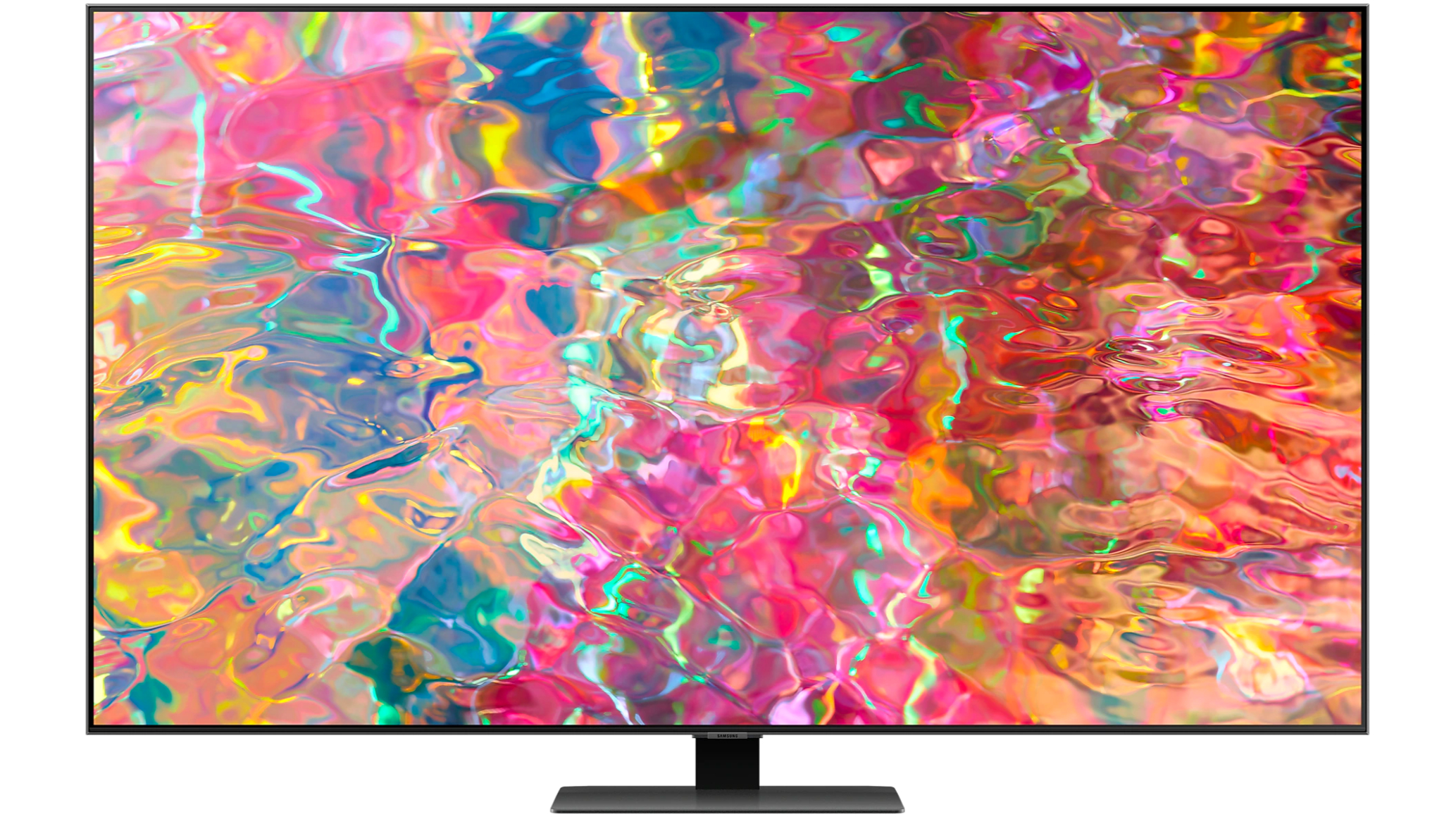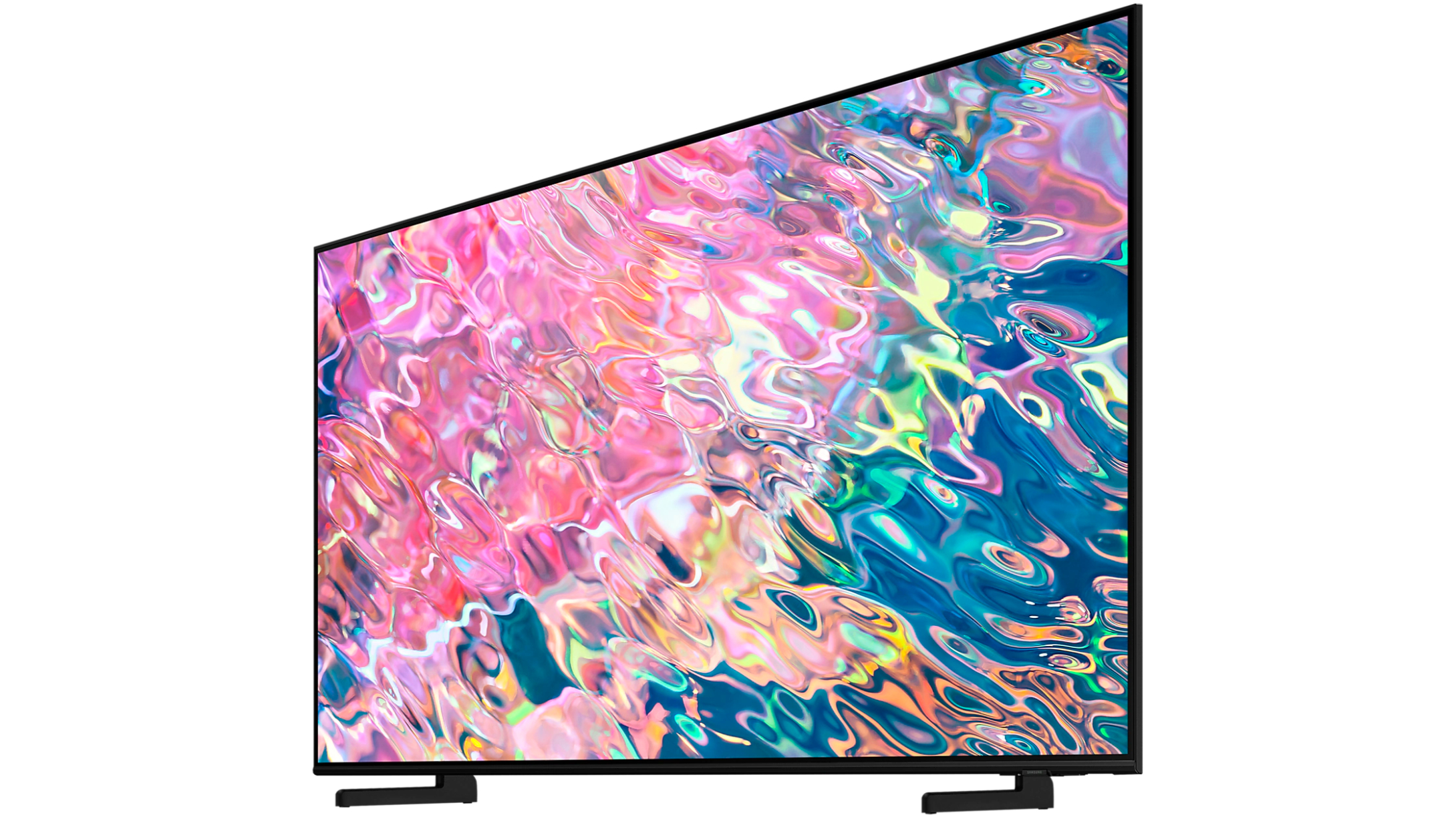Samsung Q60B vs Samsung Q80B: which 2022 QLED 4K TV is best for you?
We compare two affordable Samsung QLED TVs so you find the perfect model

If you’re in the market for one of the best Samsung TVs today with a QLED screen, you might find yourself wondering about the Samsung Q60B vs the Samsung Q80B – they're two more affordable from the company's range.
Samsung has an enviable track record where televisions at pretty much every price-point are concerned – it's rare to draw up any category of the best TVs that doesn’t have a Samsung model in contention when it’s time to draw up a shortlist.
Samsung, like most other significant TV manufacturers, isn’t shy of launching a very extensive line-up of televisions, from ‘entry-level’ to ‘premium flagship packed with cutting-edge technology’. The differences between models at those extremes of the line-up aren’t difficult to get your head around.
It’s considerably trickier to get a handle on the differences between models nearby in the range and fairly close together on price, though. And that makes understanding a) which represents better value for money, and b) which is more appropriate for your specific requirements, less straightforward than is ideal.
That’s where we come in. Here we’re going to look at two models in Samsung’s 4K QLED line-up, the Q60B and the Q80B. We’ll consider the price differential, variations in specification and, basically, all of the relevant information in order to give you the best idea possible of how these models differ – and which one is more suitable for your needs.
Samsung Q60B vs Q80B: price and sizes
Obviously Samsung wants to make both of these models as attractive as possible to as many people as possible, so both are available in a wide range of sizes. The Q60B is available in eight sizes in the US, and six sizes in the UK; the Q80B is available in five sizes in both countries.
Picking the correct size of screen is important, of course – a little too small and you’ll be disgruntled with your purchase almost immediately; too large and you’ll never stop feeling dominated by your own television.
So despite the fact there’s quite a big overlap between prices of the Q60B and Q80B, don’t imagine you’re somehow hacking the system by buying a bigger Q60B than you actually need simply because it’s a similar price to a smaller Q80B. The right size is always the right size.
As far as pricing goes, the Q60B costs £649 / $549 for the 43 inch model; £749 / $549 for the 50 inch version; £819 / $749 for the 55 inch screen; $799 for 60 inch screen (US only); £1,049 / $899 for the 65 inch model, $1,199 for the 70 inch version (US only); £1,619 / $1,299 for the 75 inch model; and £2799 / $1,999 for the 85 inch screen.
The Q80B, meanwhile, will set you back £999 / $999 for a 50 inch screen; £1,499 / $1,099 for the 55 inch model; £1,999 / $1,299 for the 65 inch version; £2,499 / $1,899 for the 75 inch screen; and £3,699 / $2,799 for the 85 inch model.
So there’s certainly a screen-size to suit most folks in both ranges, and while the price difference isn’t enormous it certainly establishes a hierarchy in the Samsung model range. But, as always, we suggest you identify the ideal screen size, set a budget and then stick to it – that should guide your way.

Samsung Q60B vs Q80B: design
The differences in features are more significant than the differences in design between these two models, but both are equally worthy of consideration.
As far as design is concerned, the Q60B is one of Samsung’s ‘AirSlim’ ranges – and the description is entirely fair. The 50-inch model is less than 26mm deep, and across the range the bezels are nigh-on invisible. The screen itself can adjust for height on its two feet, so you can leave a big enough gap between the TV and the surface it’s standing on for one of the best soundbars if you wish. The feet are also adjustable for width on the 75-inch and 85-inch models, which is just as well – otherwise you’d need an extremely wide surface to stand your big television on, if not wall mounted. The Q60B range is compatible with Samsung’s ‘Slim Fit’ wall-mount, so if you’re not using your TV’s feet it can be mounted gratifyingly close to a wall – no ugly gaps.
The Q80B, by way of contrast, is very nearly 54mm deep – hardly a bloater, but a fair bit deeper than the Q60B nonetheless. That additional depth means it’s not compatible with the 'Slim Fit' wall-mount, either. Its central pedestal stand means it doesn’t need an especially wide surface to stand on, though, and when viewed from dead-ahead its bezels are all-but invisible.

Samsung Q60B vs Q80B: screen tech
Some of the Q80B’s additional depth, and some of its additional cost can be explained by the fact its 4K QLED panel features full array backlighting – that’s to say, there are LEDs across the entirety of the rear of the panel providing the light needed by the QLED panel. The Q60B uses an edge-let panel, so there are LEDs only around the sides of the screen, shining inwards to cover the whole panel.
The advantages of full array backlighting are that it's brighter, and allows for more precise local dimming of the backlight for greater contrast. You can have more dimming zones, and you can dial back the brightness in smaller areas when needed.
The Q60B uses Samsung’s ‘Dual LED’ backlighting methodology instead, with both ‘warm’ and ‘cool’ LEDs deployed in an attempt to offer as much color volume as possible. It’s a more affordable and more compromised method of getting light through the panel, but it does at least allow the screen to be notably slim, and still delivers good contrast in screens we've tested in it, such as the Samsung BU8500.
So, both screens are 4K, with the rich colors of QLED, but the Q80B will deliver HDR that's both brighter and darker.
Samsung Q60B vs Q80B: features
It’s a similar story where many of the other features of these model ranges are concerned – the more expensive S80B is, basically, better-specified than its S60B sibling.
Image processing, for example: the chips that fundamentally runs the entire show in the S60B is Samsung’s Quantum Processor Lite 4K, while the S80B is fitted with the AI Quantum Processor 4K. The AI Quantum Processor 4K allows for a degree of artificial intelligence, meaning it’s able to adapt to the type of content you’re watching and adjust its picture settings to suit. It’s also more accomplished where upscaling of sub-4K content is concerned, and uses some machine learning to attempt to bring greater three-dimensionality to on-screen images.
The S60B is fitted with a two-channel audio system, driven by an undisclosed but most definitely modest amount of power. It features ‘Object Tracking Lite’, the most mild version of Samsung’s attempts to have audio output follow on-screen movement, and is compatible with ‘Q Symphony’. ‘Q Symphony’ allows the TV’s speakers to contribute to the audio output of a compatible Samsung soundbar (of which there are plenty) when it’s attached.
The S80B is much more thoroughly specified for audio performance. It too features ‘Object Tracking Lite’, but much more impressively it’s fitted with six speaker drivers – two of which fire upwards in an effort to bring a ‘height’ element to the sound when the TV receives a Dolby Atmos soundtrack. It’s also compatible with ‘Q Symphony’, and its superior processing power means it can assess the acoustic properties of the room it’s in and adjust its audio output accordingly.
Elsewhere, there are quite a few impressive features shared across both ranges. The Tizen-based Smart TV interface remains among the very best around, for example, and both ranges are compatible with HDR10+ Adaptive (but not, with all Samsung TVs, the Dolby Vision equivalent). Both have eARC capability on an HDMI socket, and both use Wi-Fi and Bluetooth 5.2 for wireless connectivity.

Samsung Q60B vs Q80B: gaming
It’s here that the Q80B puts the most decisive distance between itself and its more affordable sibling – if you take next-gen console gaming seriously, the Q80B is massively the better choice here.
That’s basically because it’s able to exploit more of the clever features of next-gen consoles than the Q60B. Both ranges feature Auto Low Latency Mode, and both feature super-wide game view and Samsung's useful Game Bar for checking settings, but the Q80B adds HGiG tone-mapping, FreeSync Premium Pro VRR, and 4K 120Hz over HDMI. VRR and 4K 120Hz in particular are game-changers, so to speak.
Samsung Q60B vs Q80B: conclusion
To an extent we’ll go out the way we came in – by suggesting you pick a screen-size and a budget, and stick to it. But if you’ve a little flexibility where budget is concerned, though, the Q80B has the better of the more affordable Q60B in a number of areas, including the all-important image quality.
If you’re a gaming fiend, for example, the Q80B is better equipped. If you don’t intend to add an external soundbar, it’s considerably better specified for sound. And its superior processing engine promises improved across-the-board picture performance. In short, it’s the better television.
Not that it’s cut and dried, mind you. The Q60B is quite a lot slimmer than the Q80B, and for quite a few wavering customers that will count for a lot. And you could get a larger screen for the same price, if that's your priority.
Get daily insight, inspiration and deals in your inbox
Sign up for breaking news, reviews, opinion, top tech deals, and more.
Simon Lucas is a senior editorial professional with deep experience of print/digital publishing and the consumer electronics landscape. Based in Brighton, Simon worked at TechRadar's sister site What HiFi? for a number of years, as both a features editor and a digital editor, before embarking on a career in freelance consultancy, content creation, and journalism for some of the biggest brands and publications in the world.
With enormous expertise in all things home entertainment, Simon reviews everything from turntables to soundbars for TechRadar, and also likes to dip his toes into longform features and buying guides. His bylines include GQ, The Guardian, Hi-Fi+, Metro, The Observer, Pocket Lint, Shortlist, Stuff T3, Tom's Guide, Trusted Reviews, and more.
